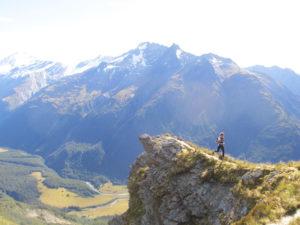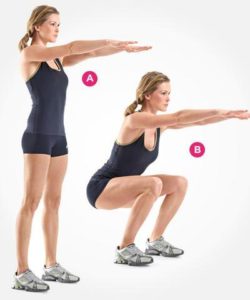With the warmer weather and longer days, running season is upon us!
Whether you are training for a specific event, keeping fit or just enjoy going out for a leisurely run, it is key to keep the injuries at bay. It is always easier to prevent injuries rather than treat them once they occur!
Common running injuries we see and treat regularly at Central Lakes Physio include muscle strains (usually calf, hip flexors or hamstrings), plantar fasciopathies, patello-femoral pain (knee), shin splints and tight ilio-tibial bands – just to name a few.
We have listed a few key simple hints, tips and exercises below that you can do to help keep those niggles at bay:
- When training for an event, ensure you increase your speed and distance gradually.
- Mix your running training up – don’t just stick to increasing the kms.
- You should aim to do a weekly speed session – this is where you vary your speed over different distances.
- Cross-training by swimming, biking or rowing will help increase your cardiovascular fitness without putting the same impact stress on your joints.
- A functional strength programme will help to strengthen the muscles that are needed for running effectively.
- We have included a few exercises below that you can do at home to aid your strength running programme:
Squats
Stand with feet hip distance apart, arms out in front of you
Bend your knees and push your bottom back until your thighs are parallel to the ground
Ensure knees are facing towards your big toe
Repeat 30 x, aim to build to 50 reps
Lunges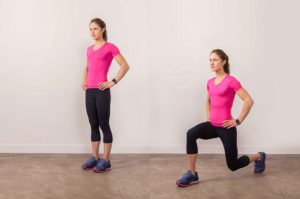
Step one foot forward
Lower your body by bending the knee until your thigh is parallel to the floor
Try to keep the knee in line with the mid foot
Straighten back up and repeat on the opposite side
Repeat 25 x each side
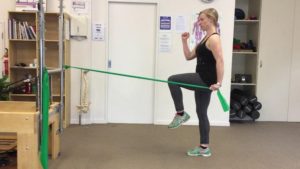 Gluteal activation
Gluteal activation
Start in standing, holding a theraband in one hand by your side
Lift your leg (same side as theraband) to 90 degrees at hip and knee, ensuring the standing leg stays strong and in the midline. At the same time, bend your opposite arm so your hand is at shoulder height.
Extend the lifted leg out behind you as you lengthen the theraband arm out in front, pulling your opposite arm back to mimic a running action.
Return to the starting position and repeat 20x each leg
Core
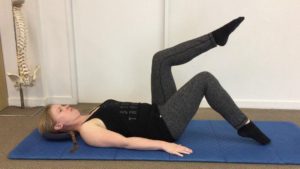 Lie on your back with knees and feet hip-width apart
Lie on your back with knees and feet hip-width apart- Ensure neutral spine and lower abdominal/pelvic floor region is engaged
- Scoop one leg up to ‘single leg tabletop’ – hip and knee bent to 90 degrees
- Engage the upper abdominal muscles (think about sliding the ribcage down towards the pelvis)
- Then scoop the other leg up into the tabletop position also- you are now in ‘double tabletop position’
- Lower your left leg and tap the tips of your toes on the mat then float this leg back up into the tabletop position
- Repeat alternating legs.
Plantarfasica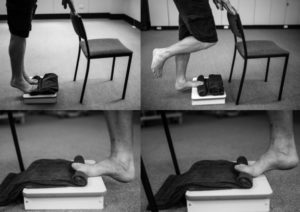
Perform calf raises with a towel under your toes, to increase the loading on the plantar fascia
Take 3 seconds to go up on one leg, pause for 2 seconds, then lower over 3 seconds
Repeat for 3×12
Start with double leg calf raises and progress to single leg
And finally, make sure you are stretching, foam rolling and allowing your body adequate recovery time.
If you have any niggles or injuries you would like to get sorted, come and see us at Central Lakes Physio!
Call 03 443 1711 or book online today!
